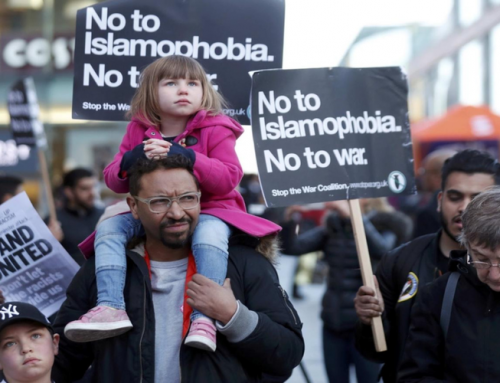The 2017 Global Terrorist Index was published on 17 November by the Institute of Economics and Peace, and included many important details about the development of terrorismin 2016 and 2017. The year 2017 could be considered a bloody year, but the bloodiest were the years 2014 and 2015, which witnessed the most painful terrorist attacks. This decline was the result of the success of the Iraqi and international campaign to restore the areas under the control of ISIS and the loss of more than 97% of the cities and areas of influence that ISIS used to have a control over, as well as the general decline of ISIS’s media strategy, due to its successive losses taking place in 2016 and 2017. The Nigerian government’s campaign against Boko Haram has significantly reduced the number of Boko Haram attacks compared to 2016 and the previous years.
Here is a summary of the report, which usually covers four pillars: (A general summary, trends, terrorist groups, and the economic impact of terrorism).
– General Summary:
This year, 77 countries in the world have suffered at least one terrorist attack in a clear decline compared to last year, while 79 countries improved their ranking in the international terrorism index asthe ranking of 58 other countries have declined. Countries such as Pakistan and Nigeria saw the best improvement. In general, global terrorism has declined after ISIS and Buku Haram began defending their very existence, after the two groups, in 2014 and 2015, expanded and spread. This success is due to the field operations against these groups. Five of the world’s top Muslim countries have topped the global terrorism index of 2017 and have the highest rate of deaths due to terrorism. These countries accounted for three-quarters of the world’s deaths due to terrorism. Unfortunately, these countries are: Iraq, Afghanistan, Nigeria, Pakistan, Syria.

The number of deaths from terrorism dropped to 13% between 2016 and 2017 compared to 10% in 2015, amounting to 25,673 victims this year, which is the second largest decline since 2010. Nigeria saw the largest drop in the death toll because of terrorism in 2017. The number of terrorism victims was 3,100 in 2016, compared to 5,556 in 2015, which is 80% less than the previous years. This is due to the systematic campaign led by the state and the civil society against ISIS and the divisions that the group witnessed. The decline of BukuHaram has led to a 75% decline in the number of victims of Buku Haram in Nigeria’s neighboring countries of Cameron, Chad and Niger, which means more than 1,000 deaths less than last year.
 This decline in the number of deaths due to terrorism has been witnessed even in Pakistan, Syria and Afghanistan, which saw a decline of 500 victims less than 2016, with a 33% decline compared to the previous years. Afghanistan saw a 14% decline in the rate of victims of terrorist attacks, while the number of deaths due to terrorist attacks dropped by 24% in Syria compared to 2015. Pakistan saw a decrease in the number of victims by 12%, or 956 casualties in 2016, the lowest rate since 2006. These positive indicators in the four countries was not experienced, unfortunately, by Iraq, which had 44% of the victims of terrorist operations in 2016.
This decline in the number of deaths due to terrorism has been witnessed even in Pakistan, Syria and Afghanistan, which saw a decline of 500 victims less than 2016, with a 33% decline compared to the previous years. Afghanistan saw a 14% decline in the rate of victims of terrorist attacks, while the number of deaths due to terrorist attacks dropped by 24% in Syria compared to 2015. Pakistan saw a decrease in the number of victims by 12%, or 956 casualties in 2016, the lowest rate since 2006. These positive indicators in the four countries was not experienced, unfortunately, by Iraq, which had 44% of the victims of terrorist operations in 2016.
In the Organization for Economic Co-operation and Development (OECD) member states, an economic group of 35 developed countries, the death rate because of terrorism declined considerably in the first six months of 2017, with a death toll of only 82 people, compared to more than 265 people in 2016. Eighteen out of the 35 members of OECD have seen at least one terrorist attack between 2016 and 2017, with the highest proportion of victims in France, Turkey and Spain. The region has seen a considerable increase in the number of lone wolf attacks, with attacks increasing from only one attack in 2008 to 56 in 2016. Britain has seen most of these attacks.
The report proved that in the last 17 years, 99% of the victims of terrorism have fallen in countries suffering from political conflicts or repressive policies, which didn’thave free democratic regimes.
– Trends
South Asia has seen the highest rate of terrorism-related activities in the past 15 years. The Middle East and North Africa has seen the fastest growing number of terrorist attacks. In Egypt, for example, the number of victims of terrorism has increased nine times, and the speed of terrorism in Turkey has increased 16 times as a result of the recent tension between the Turkishgovernment and the PKK, as well as the successive ISIS attacks.
The targeting of civilians increased by 17% between 2016 and 2017, in contrast to the previous years, suggesting the state of absurdity and despair sweeping extremist groups. In general, the number of innocent victims falling during military operations increased by 67% between 2006 and 2016, while the number of victims of direct fighting increased by 66%. Between 2016 and 2017, the proportion of victims of each terrorist attackincreased by 2.4% per attack in countries that see most terrorist attacks.
Terrorist groups
The four terrorist groups (ISIS, Buku Haram, Taliban and Al-Qaeda) have claimed responsibility over 59% of the deaths resulting from terrorist attacks in 2016, with a similar percentage in 2017. ISIS has bypassed the brutality of Buku Haram in 2016 and 2017, after itdirectly targeted 15 countries, which is four times double the number of itsattacks in 2015, with the number of victims increasing by 50% compared to 2015. Some 9132 were killed in 2016 at the hands of ISIS, mostly in Iraq, where ISIS used civilians as human shields to repel attacks by Iraqi forces against it. However, this percentage has witnessed a sharp decline after the successive defeats of ISIS in Iraq and Syria and the loss of most of the territories under the group’s control, where it used to commit its crimes. The number of sympathizers with ISIS who were killed reached 2,417 in 11 countries in 2016. The financial resources of ISIS, used to fundits activities, has declined by three times, going down from 81 million dollars per month in 2015 to 18 million dollars per month in 2016, due to the loss of most of oil fields under its control, which ISIS used to get money from by selling oil to the active mafia in the region.
The crimes of Buku Haram, Taliban and al-Qaeda have fallen sharply in 2016 and 2017. The number of Buku Haram victims have fallen sharply from 6,700 in 2014 to 5,478 in 2015 to 1079 in 2016. This is due to the concentrated campaign against the group by the Nigerian government. The Taliban civilian victims dropped by 21% in 2016 and 2017, while the number of military casualties caused by Taliban increased dramatically due to the battles the group is waging to achieve a wider geographical expansion. Al-Qaeda, which has become almost an invisible organization, had a decline of35% of its victims in 2016 and 2017, because of the decline in its media propaganda and its leadership struggle, which is raging between Hamza bin Laden and Ayman al-Zawahiri.
The attacks of the most known four terrorist groups in 2016

– The economic impact of terrorism
The impact of terrorism on the international economy has decreased by 7% compared to 2015 and by 19% compared to 2014. The value of material losses resulting from terrorism was $84 billion in 2016. The exact figures of the economic losses for 2017 have not yet been identified, due to delaying publishing budgets and economic data by concerned bodies. Iraq suffered the highest economic losses caused by terrorism in 2016 and 2017 as a result of the ongoing government-led campaign against ISIS. The losses mentioned above do not account for the costs of preventive programs adopted by states to prevent the spread of terrorism in their territory.
The most famous terrorist attacks in 2016

*Dr.Tarik Ladjal is Professor of History at Effat University in Jeddah, Saudi Arabia





